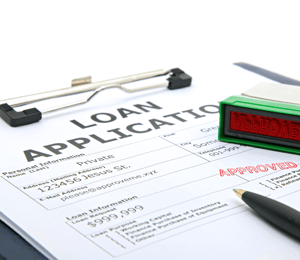As soon as you began even thinking of looking for a new house, you were probably repeatedly advised to save up for a large down payment.
With most guidelines recommending a minimum of 5% and advocating at least 20% of the purchase price for a down payment, accumulating that much cash can be a very scary prospect indeed.
But you may be surprised to learn that it is possible for Canadians to buy a new home without a down payment at all, also known as a "zero down" mortgage.
No money down mortgages only became legal in 2006 when mortgage default insurance was first offered by Genworth Financial and the CMHC (Canada Mortgage and Housing Corporation). Prior to that, most people were required to save up, typically putting as much as 25% or more towards their down payment. But following the 2008 financial crash, true "zero down" mortgages were eliminated. The way "zero down" mortgages work today, (or flex down, as they are referred to now) is homebuyers find alternative financing in order to produce their down payment.
The new laws implemented in October 2016 now require anyone with less than a 20% down payment to get mortgage default insurance, but it's more than feasible for home buyers to secure a mortgage with absolutely no upfront cash at all.
 What Is a Zero Down Mortgage?
What Is a Zero Down Mortgage?
Essentially, this is when a bank or financial lending institution decides to give you a mortgage for a new home despite the fact you're not going to put down any cash upfront. Even if you've never owned a home before, you may qualify for a zero down mortgage if:
- You have a stable source of income;
- You have a good credit score;
- You can prove you'll be able to pay your mortgage as well as other housing expenses like utilities and taxes; and
- You can prove you'll be able to continue making your payments even if you suffer a loss of income.
Of course, the benefit of a zero down mortgage is you won't have to spend months or years saving up for the down payment (or hoping for the sum as a gift from family members), allowing you to move directly into a new home. But the downside is it's more difficult to qualify for a zero down mortgage, and you may be required to agree to less favourable interest rates and repayment terms.
If your credit score is less than stellar or you don't have a solid history of steady income, you probably won't be able to qualify for a zero down mortgage.
 How to Get a Zero Down Mortgage
How to Get a Zero Down Mortgage
Canadian law is very strict about how much money an individual can borrow in order to buy a house, known as the "stress test" regulations that require you to prove all of your household expenses (mortgage, bills, and taxes) are 39% or less of your monthly income.
The way a zero down mortgage works is you'll actually be borrowing the down payment from one company and then securing the mortgage from a different company because doing otherwise is forbidden by Canadian law.
Therefore, if you're interested in securing a "zero down" mortgage, you'll need to borrow money from somewhere, including:
- Credit card - Due to high interest rates, it's generally not advised to borrow large sums using a credit card.
- Government programs - Depending on a number of factors, you may qualify for federal or province-level programs that can assist you with making a down payment. If it's your first home, you may be eligible to use valuable first-time home buyer resources.
- Family members/Friends - It's estimated that approximately 34% of young Canadians have borrowed significant sums of money from family members or friends. While the interest rates may be more attractive, not everyone is comfortable being deep in debt to close acquaintances.
- Personal loan - A personal loan can be a great way to acquire the money needed for a down payment on a house.
- Line of credit - It's possible to use a line of credit for your down payment. For people with a stellar credit rating or those that can acquire a home equity line of credit, this method may be the most affordable option for borrowing a down payment.
Even if you can successfully borrow the money for a down payment, you'll still have to declare this when you apply for a mortgage as all banks and lending institutions will require you to list your outstanding debts during the mortgage application process.
That being said, if you have a steady income or have already invested money in a home or another asset which you can borrow against, it's certainly quite feasible to both borrow money for the down payment as well as a mortgage (from a different bank, due to legal restrictions). Keep in mind, the combined interest rates of the two loans (down payment loan and mortgage) may be quite costly on a monthly basis, especially as most personal loans carry a higher interest rate than what you'll get with your mortgage.
Nonetheless, if you're short on cash but have a solid income, good credit rating, and want to leverage these to acquire a new home, it's definitely possible to get a zero down mortgage. Take your time and research all of your options before you commit to taking on multiple loans simultaneously, as this can be a lengthy and potentially quite expensive commitment.




